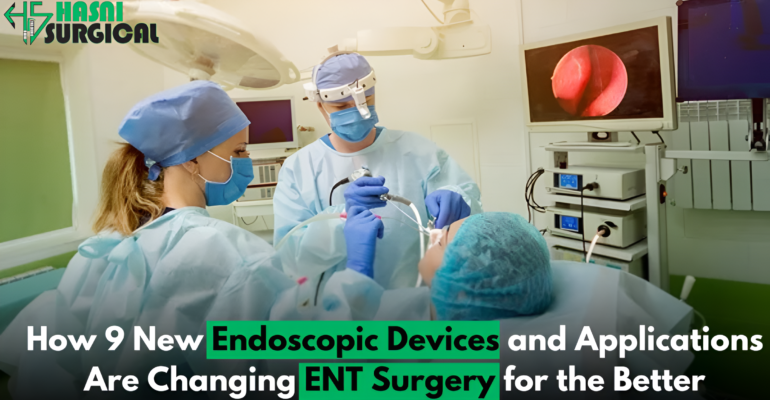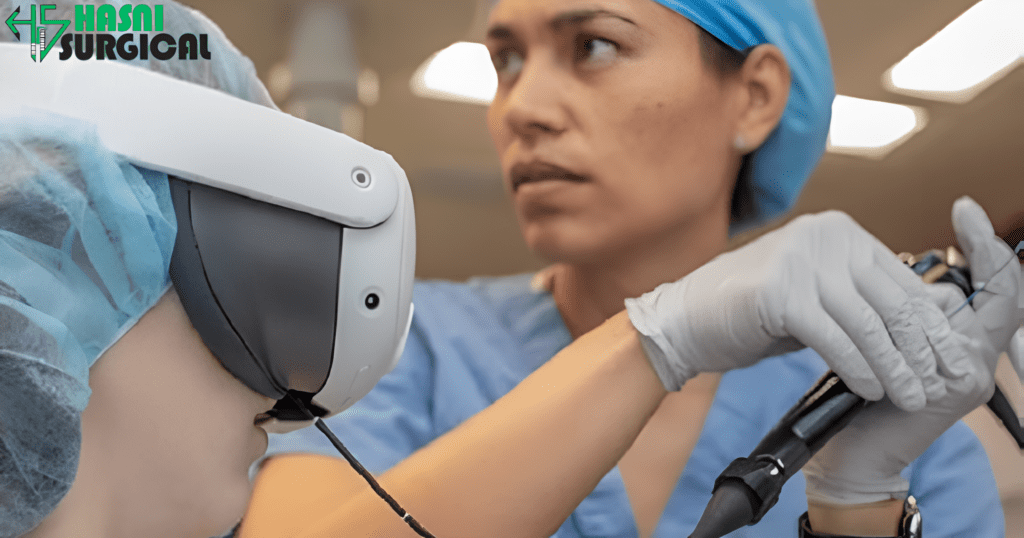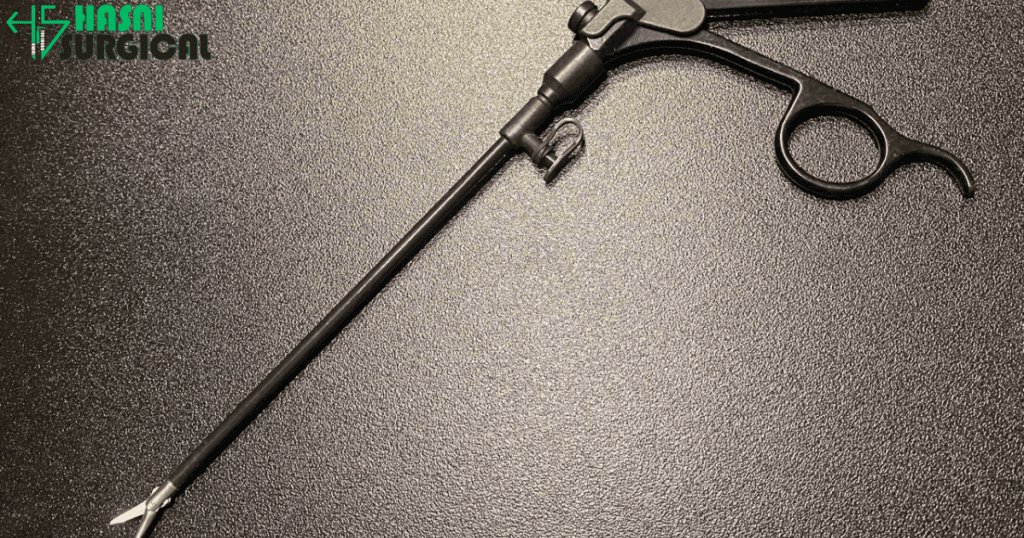How 9 Important Endoscopic Devices Are Advancing ENT Surgery
March 26, 2025 2025-04-11 5:55How 9 Important Endoscopic Devices Are Advancing ENT Surgery

How 9 Important Endoscopic Devices Are Advancing ENT Surgery
Ear, Nose, and Throat (ENT) surgery has been transformed with the introduction of advanced endoscopic Devices. Open surgery, with large incisions and long recovery periods, is being obviated by minimal surgery. The introduction of fiber-optic endoscopes and precision instruments has allowed ENT surgeons to perform complex procedures more precisely, with less discomfort to the patient and with faster recovery.
In this article, we present how minimally invasive technology and fiber-optic endoscopes are revolutionizing ENT surgery. Ranging from sinus surgery to laryngeal surgery, the devices have enhanced visualization, enhanced surgical precision, and augmented treatment options for victims.

The History of Endoscopic ENT Surgery
From Traditional to Minimally Invasive Methods
ENT operations in the past needed large cuts, which put the patient at a higher risk of infection, increased healing time, and most times led to heavy scarring. Since the invention of endoscopic technology, surgeons can now visualize and treat delicate structures through small, natural orifices like nasal passages, ear canals, and throats.
Endoscopic minimal access surgery has the following advantages over the traditional technique:
- Better Visualization: High-definition fiber-optic cameras provide clear images of internal structures.
- Less Trauma: Small incisions and accurate instrumentation minimize trauma to surrounding tissues.
- Faster Recovery: Patients have less postoperative discomfort and less time spent in the hospital.
- Fewer Complications: Reduced bleeding and fewer infections lead to a more successful surgery.
Due to these benefits, ENT doctors have adopted endoscopic devices for numerous various procedures, from sinus surgery to voice cord therapy.
- Less Trauma: Minimally invasive smaller incisions and precise instrumentation minimize trauma to surrounding tissue.
- Quicker Recovery: Less postoperative discomfort and shorter stays in the hospital.
- Lower Complication Rate: Reduced bleeding and fewer infection rates increase the success of surgery.
With all these benefits, ENT doctors have adopted endoscopic devices for many procedures, ranging from sinus procedures to vocal cord procedures.

Fiber-Optic Endoscopes: Breaking Down the Boundaries of ENT Surgery
What are Fiber-Optic Endoscopes?
Fiber-optic endoscopes are long, thin, and flexible medical devices consisting of a camera and an HD light source. Surgeons utilize endoscopes to access challenging anatomy without cutting large incisions. The endoscopes display images in real time on a screen, giving an expanded view of the operating area.
Applications of Fiber-Optic Endoscopes in ENT Surgery
Fiber-optic endoscopes have revolutionized diagnostic and surgical potential in a multitude of ENT procedures, such as:

1. Endoscopic Sinus Surgery (ESS)
Endoscopic sinus surgery is one of the most common applications of fiber-optic technology. It is used in the treatment of chronic sinusitis, nasal polyps, and sinus blockage.
Advantages:
- Least invasive procedure via the nostrils
- Enhanced drainage and ventilation of sinuses
- Quick recovery with less postoperative pain.

2. Laryngeal Surgery
For vocal cord disorders, for instance, polyps, nodules, and cancer in the initial stages, fiber-optic endoscopes facilitate target interventions by the surgeon.
Advantages:
- Live observation of the movement of vocal cords.
- Precise excision of lesions without injury to adjacent tissue.
- Least invasive treatment procedures for voice disorders.

3. Ear Procedures (Otologic Surgery)
Fiber-optic endoscopes also enhanced surgical procedures for ear pathology like cholesteatoma, tympanic membrane perforation, and ossicular chain reconstruction.
Benefits:
- Better visualization of the middle ear without big incisions.
- Direct visualization of narrow ear canal passages within the ear canal.
- Less risk of hearing loss with surgery.

4. Transnasal Esophagoscopy (TNE)
Transnasal esophagoscopy is used by ENT physicians to visualize the esophagus through the nasal passage without sedation. It’s an extremely useful diagnostic procedure in the case of swallowing disorder and esophageal disease.
Benefits:
- Office procedure is short with minimal pain.
- No general anesthesia needed.
- Early diagnosis of conditions such as Barrett’s esophagus.

Minimally Invasive Equipment in ENT Surgery
The Trend Towards Precision and Efficiency
The effectiveness of fiber-optic endoscopes is supplemented by the development of minimally invasive surgical devices. These devices allow precise tissue manipulation, reducing injury to surrounding structures and optimizing patient outcomes.
Major Minimally Invasive Tools in ENT Surgery

1. Microdebriders
A microdebrider is a powered surgical device that excises and eliminates soft tissue at the same time. It is extensively applied in endoscopic sinus surgery and turbinate reduction surgeries.
Advantages:
- Effective nasal polyp and inflamed tissue removal.
- Minimizes intraoperative bleeding.
- Quick and controlled excision of tissue.

2. Endoscopic Scissors and Forceps
Advanced endoscopic scissors and forceps enable surgeons to dissect with precision and excise tissue with minimal trauma. These instruments are best for laryngeal and sinus procedures.
Advantages:
- Enhanced visualization of difficult-to-reach areas.
- Minimal risk of scarring.
- Greater accuracy in vocal cord procedures.

3. CO₂ and Diode Lasers
Lasers find more applications in minimally invasive ENT procedures for incision, vaporization, and coagulation of tissue. Popular uses include excision of vocal cord lesions and surgery of the airway.
Advantages:
- Accurate targeting of infected tissue.
- Minimum bleeding owing to simultaneous coagulation.
- Rapid healing with minimal scarring.

4. Balloon Sinuplasty Devices
Balloon sinuplasty is a new technology that employs a tiny balloon for dilation of blocked sinus passages without removal of bone or soft tissues.
Advantages:
- Minimally invasive with minimal bleeding.
- Surgical tissue removal is not required.
- Rapid recovery with better long-term sinus drainage.
The Future of Endoscopic ENT Surgery
Future Technological Advances
With technology advancing continuously, the future of endoscopic ENT surgery is going to be even more precise and modern. Some of the newer, modern developments are:
- 3D Endoscopy: Provides greater depth vision during surgery.
- Robotic-Assisted ENT Surgery: Offers greater precision for intricate procedures.
- AI-Assisted Endoscopy: Uses artificial intelligence to examine tissue pathology in real time.
- Miniaturized Endoscopic Instruments: Enable even less invasive procedures.
The Growing Acceptance of Office-Based Endoscopic Procedures
As technology has improved for more mobile and less invasive endoscopic procedures, increasing numbers of ENT procedures are done in the outpatient office setting. No longer office procedures, transnasal esophagoscopy and endoscopic injection of the vocal cords are now options for patients as simple, minimally invasive procedures with no hospitalization required.
Conclusion: ENT Surgery in the New Millennium
Later, endoscopic equipment like fiber-optic endoscopes and minimally invasive equipment transformed ENT surgery with operations that are more accurate, safer, and less invasive. Advances like these have improved patient recovery, reduced hospital stays, and provided new avenues for treatment for ear, nose, and throat disorders.
We at Hasni Surgical are veteran manufacturers of high-quality, precision ENT surgical instruments for specialized, high-end ENT surgeries. Precision and innovation form the foundation of our work based on our desire to provide surgeons with the best tools to perform sensitive and complex procedures.
To know more about our ENT surgical equipment, you can get in touch with us or explore our catalog. From endoscopes and endoscopic forceps to microdebriders, we can help with the next stage of minimally invasive ENT surgery innovation.
